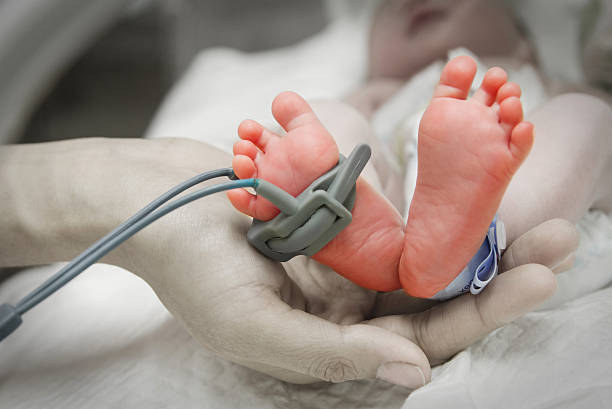Persistent Pulmonary Hypertension of the Newborn (PPHN) is a serious and life-threatening condition in which a newborn’s circulatory system fails to adapt to breathing outside the womb. This prevents normal blood flow to the lungs, leading to low oxygen levels (hypoxemia) and potential organ damage.

🩺 How Does Normal Blood Flow Change at Birth?
Before birth, a baby’s lungs are filled with fluid and not used for oxygen exchange. Instead, oxygen comes from the mother’s placenta. To bypass the lungs, blood flows through special fetal blood vessels:
🔹 Ductus Arteriosus – A vessel that connects the pulmonary artery (going to the lungs) to the aorta (going to the body).
🔹 Foramen Ovale – A small opening between the two upper heart chambers, allowing blood to bypass the lungs.
At birth, a baby’s first breaths should trigger these fetal blood vessels to close, redirecting blood flow to the lungs for oxygenation.
🚨 What Happens in PPHN?
In babies with PPHN, the fetal blood vessels fail to close properly, causing:
🔸 High pressure in the pulmonary arteries (pulmonary hypertension).
🔸 Reduced blood flow to the lungs, leading to poor oxygen exchange.
🔸 Blood bypassing the lungs, meaning oxygenated blood is not delivered to the body.
📌 The result? Low oxygen levels (hypoxemia), which can cause brain, heart, and organ damage if not treated immediately.
🛑 What Causes PPHN?
PPHN can occur due to several factors, including:
✔ Birth Asphyxia (Oxygen Deprivation) – Babies who experience distress during labor (e.g., umbilical cord problems, placental abruption).
✔ Meconium Aspiration Syndrome (MAS) – Meconium-stained amniotic fluid can block airways and increase lung pressure.
✔ Neonatal Respiratory Distress Syndrome (NRDS) – Premature lungs may not oxygenate blood efficiently, worsening PPHN.
✔ Infections (Sepsis, Pneumonia) – Systemic infections can damage blood vessels and lungs, increasing pulmonary pressure.
✔ Congenital Heart Defects – Some heart abnormalities can mimic or contribute to PPHN.
📌 Fact: PPHN affects 1-2 per 1,000 live births and requires immediate medical intervention.
🩺 Symptoms of PPHN
Babies with PPHN often show symptoms immediately after birth, including:
❌ Severe cyanosis (bluish skin due to lack of oxygen).
❌ Rapid breathing (tachypnea) and difficulty breathing.
❌ Loud heart murmurs (caused by abnormal blood flow).
❌ Low oxygen levels that do not improve with normal oxygen therapy.
📌 Severe PPHN can quickly lead to organ failure if untreated.
📌 Final Thoughts
Persistent Pulmonary Hypertension of the Newborn (PPHN) prevents normal blood flow to the lungs, leading to dangerously low oxygen levels. Early detection and intensive medical care are critical to improving survival rates and preventing complications.







